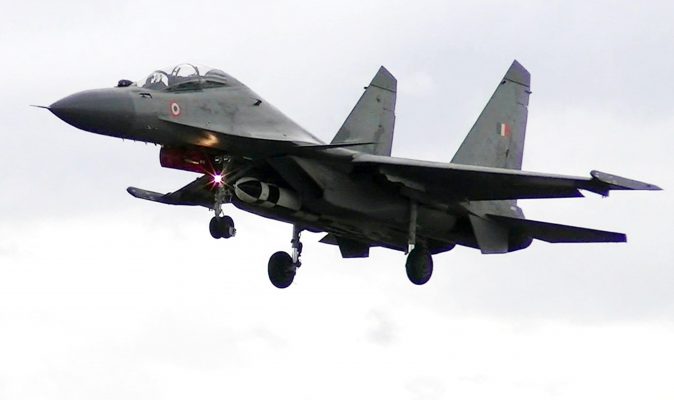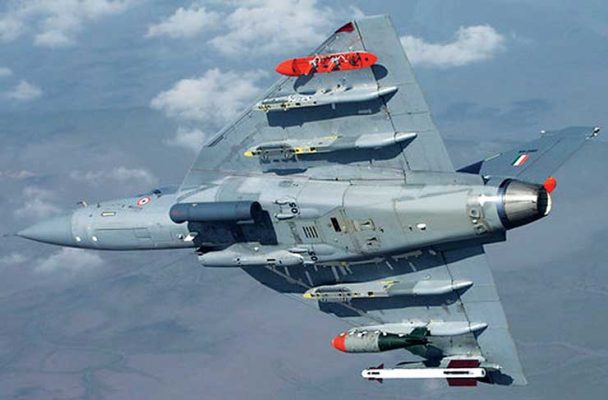
Hindustan Aeronautics Limited (HAL) has invested enormous efforts into phased indigenisation of license-manufactured products. This has come at considerable cost, but it has meant that license-production in India is not mere assembly but involves a progressive increase in indigenous content. HAL has produced hundreds of combat aircraft and helicopters under license and has achieved a high degree of indigenisation in these projects.
HAL has also consistently failed to achieve indigenisation targets set for the Su-30MKI programme with raw material production of the aircraft beginning later than expected and even now the import content by value for the type is at 40 per cent. Indigenisation levels have been at best modest for HAL’s license- manufactured products with even such long produced items like the BAE Hawk and the Dornier Do-228 having disproportionate import content by value – 60 per cent in the case of the Do-228 and 58 per cent in the case of the Hawk. Whether this was due to poor contract negotiation or is a failing of HAL is debatable but it is undeniable that HAL’s licensed produced aircraft have relatively high import content by value which in part contributes to their high cost compared to direct imports.

HAL produced and produces MiG-21, MiG-27 and Su-30MKI aircraft under license from the USSR/ Russia, Jaguars and Hawks from the UK, Dornier Do-228 from Germany and Chetak and Cheetah helicopters from France. The degree of indigenisation achieved is broken down into indigenisation by content and indigenisation by value. By these measures, in the past, India achieved 90 per cent indigenisation by content of the Chetak (72 per cent of its engine), 88 per cent of the Jaguar (84 per cent of its engine) and over 96 per cent of the MiG-21b is engine, again by content.
In more recent times, HAL has achieved a 75 per cent indigenisation by content of the Su-30MKI (60 per cent by value), 72 per cent indigenisation by content of the BAE Hawk (42 per cent by value) and 73 per cent by content of the Do-228 (40 per cent by value). Contractual decisions as to indigenisation levels by content and value are decided by the priority to be given to the project and the timelines involved.

However, there is little doubt that HAL has been somewhat delinquent in keeping to delivery schedules with time lags being the norm rather than the exception. The Su-30MKI project, for example, has been delayed by three years while the upgrade of the Jaguar and Mirage 2000 fleets being undertaken by HAL have been delayed by five and two years respectively.
HAL has two indigenous designs in production – the Light Combat Aircraft (LCA) Tejas and the Advanced Light Helicopter (ALH) Dhruv. The former is 75 per cent indigenous by content and 60 per cent indigenous by value while the latter is 75 per cent indigenous by content and 52 per cent indigenous by value. While over one hundred and fifty Dhruv helicopters have been produced to date, plus additional numbers of a weaponised version called the Rudra, only 10 Tejas combat aircraft have entered service with No. 45 squadron of the Indian Air Force.

This slow production rate is causing problems for the IAF as it seeks to rebuild its combat strength around a strong nucleus of modern combat aircraft of which the Tejas is a critical component. On the plus side, the Tejas has been cleared for a wide variety of air-to-ground ordnance while for air defence tasks, it has completed integration and testing with R-73 and Derby air-to-air missiles. These latter two systems have been cleared for use with the in-service IAF aircraft. 40 Tejas Mk1 aircraft are on order with orders for an additional 83 of an improved Mk1A variant being nearing contract signing.
On November 8, 2016, Defence Acquisition Council (DAC) under the Ministry of Defence cleared the production of 83 Tejas Mk1A aircraft at an estimated cost of USD 7.5 billion. While it should be noted that DAC approval does not equal authorisation of such funds for production – for which the approval of the Cabinet Committee on Security (CCS) is required, at one stroke, the DAC approval offers HAL to become an integral participant in the development of the Tejas – as opposed to just the production agency. It also offers HAL the opportunity to develop variants of the aircraft which may prolong the production run beyond the total of the total of 40 aircraft currently authorized (20 IOC authorized in 2006 and 20 FOC authorized in 2010) and 83 aircraft approved by the DAC.
The Tejas Mk1A – for which a prototype previously designated Tejas Mk1P was proposed by HAL – is designed to correct many of the existing shortcomings in the FOC aircraft. Planned to be equipped with Active Electronically Scanned Array (AESA) radar and electronic warfare systems currently missing from the FOC Tejas Mk1, the Tejas Mk1A may be the ultimate development of the basic Tejas airframe given its lack of internal volume without necessitating major redesign. While there is a proposed Mk 2 variant of the Tejas with upgraded General Electric F414 engines, this seems to be some time off in the future and remains a project essentially in potential.
It would appear, from statements emanating from HAL, that the Mk1A has been proposed to the Indian Air Force (IAF) by the company itself rather than the Aeronautical Development Agency (ADA). However, development of the Mk1A will require close collaboration between HAL and the ADA. To date, HAL has issued most if not all public statements regarding the project with the ADA working towards the FOC. This should be a cause of concern as no contract has been signed.

This would suggest that meeting HAL’s timeline of flying the Mk1A by 2018 with production starting by 2019 may be optimistic, though this may not necessarily impact the desired production target of 123 Tejas Mk1 and Mk1A in IAF service by 2025. In this regard, the question remains as to whether HAL has fully committed itself to developing the Mk1A in a timely fashion. Indeed, it would be naïve to expect CCS authorisation for the 83 Tejas Mk1A until at the very least the flight of the first prototype.
Yet, HAL has an opportunity to reclaim its position of producing indigenously designed aircraft as well as be a participant in the further development of the Tejas. Besides the Mk1A variant, which should be accorded priority, the two-seat trainer version of the Tejas, offers the prospect of emerging into a Lead-in Fighter Trainer (LIFT) in the league of the Korean KAI T-50 Golden Eagle while retaining the core combat capabilities of its single-seat stablemate. This would fill a gap in the IAF’s existing training program which while adequately equipped with basic and advanced trainers, is compelled to use two-seat variants of combat aircraft for roles more usefully satisfied by a LIFT. Moreover, HAL would invariably participate in any upgrade of IOC aircraft to FOC standard.
The stakes for HAL and the ADA are very high. The Tejas project is a litmus test of the ability of Indian designers and production agencies to produce a viable combat aircraft. On the very threshold of success, it behooves both agencies to work in synergy to ensure that not only is production scaled-up to meet the target of 16 aircraft per annum, but also to ensure the successful and prompt completion of the Tejas Mk1A project. The Tejas project has come too far to be allowed to stumble or fall at this stage.








